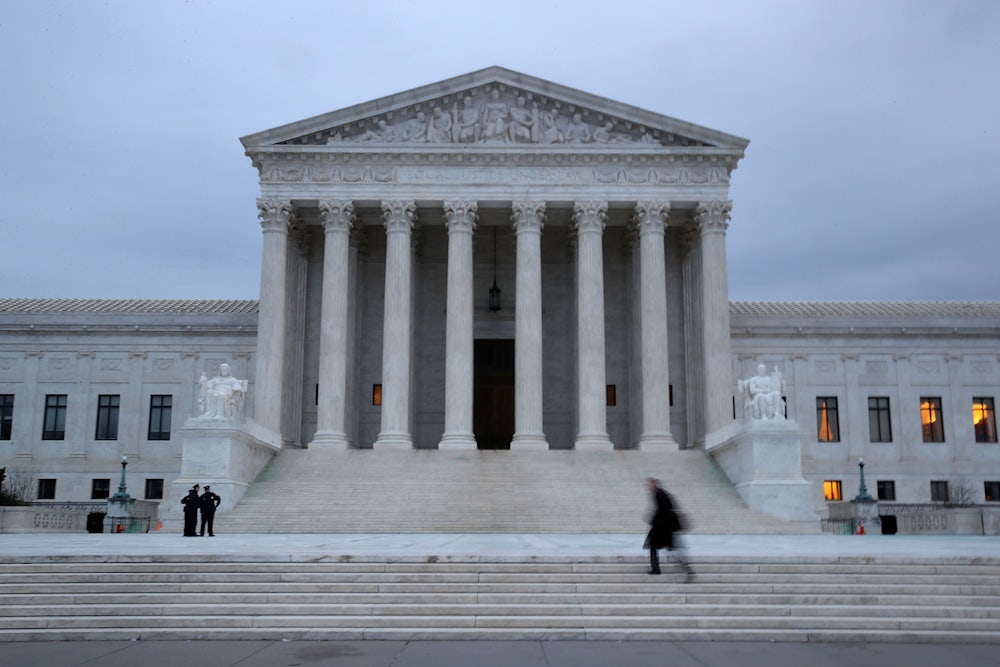On Monday, the Court announced that it would hear Gill vs. Whitford, a partisan gerrymandering case from Wisconsin, raising the possibility that it could rule on the constitutionality of political parties drawing state districts to their overwhelming advantage. While the Supreme Court has overturned race-based gerrymandering before, to date it has not struck down a plan because of its partisanship.
In Wisconsin’s case, challengers argued that Republicans had drawn districts in 2010 so that the party could retain control of the state’s legislature for the following decade. A divided panel of three federal judges ruled that the plan was unconstitutional.
The Wisconsin challengers have developed a way to calculate exactly how partisan a plan is through what they call an “efficiency gap.” Developed by two political scientists, the method, according to the Washington Post, “measures the difference between the wasted votes of the two parties in an election divided by the total number of votes cast. In an ideal scenario, where individual votes have as much impact as possible, the efficiency gap would be zero. The gap in Wisconsin was 13.3 percent in 2012.” In other words, votes for Democrats in Wisconsin were worth less than votes for Republicans.
If the Supreme Court came out against partisan gerrymandering, it would be a decisive blow to the political power of Republicans, who have utilized partisan tactics to dominate state legislatures and House races. In 2010, the GOP poured money into key state races—$30 million, more than three times what Democrats spent—to control the congressional redistricting process, which only occurs every ten years.
Republicans now control the districting process in a majority of the states. Ed Gillespie, the conservative political strategist who engineered the takeover, called the plan REDMAP, and purple-ish Wisconsin was among the targeted states. According to HuffPost, in Wisconsin’s 2012 elections, “Republicans got just 48.6 percent of the vote statewide, but won 60 of the state’s 99 Assembly districts.”
Democratic activists and organizers have been eyeing 2020 as a landmark year to push back against Republican control. But the Supreme Court could dramatically affect how those new district lines are drawn regardless.
